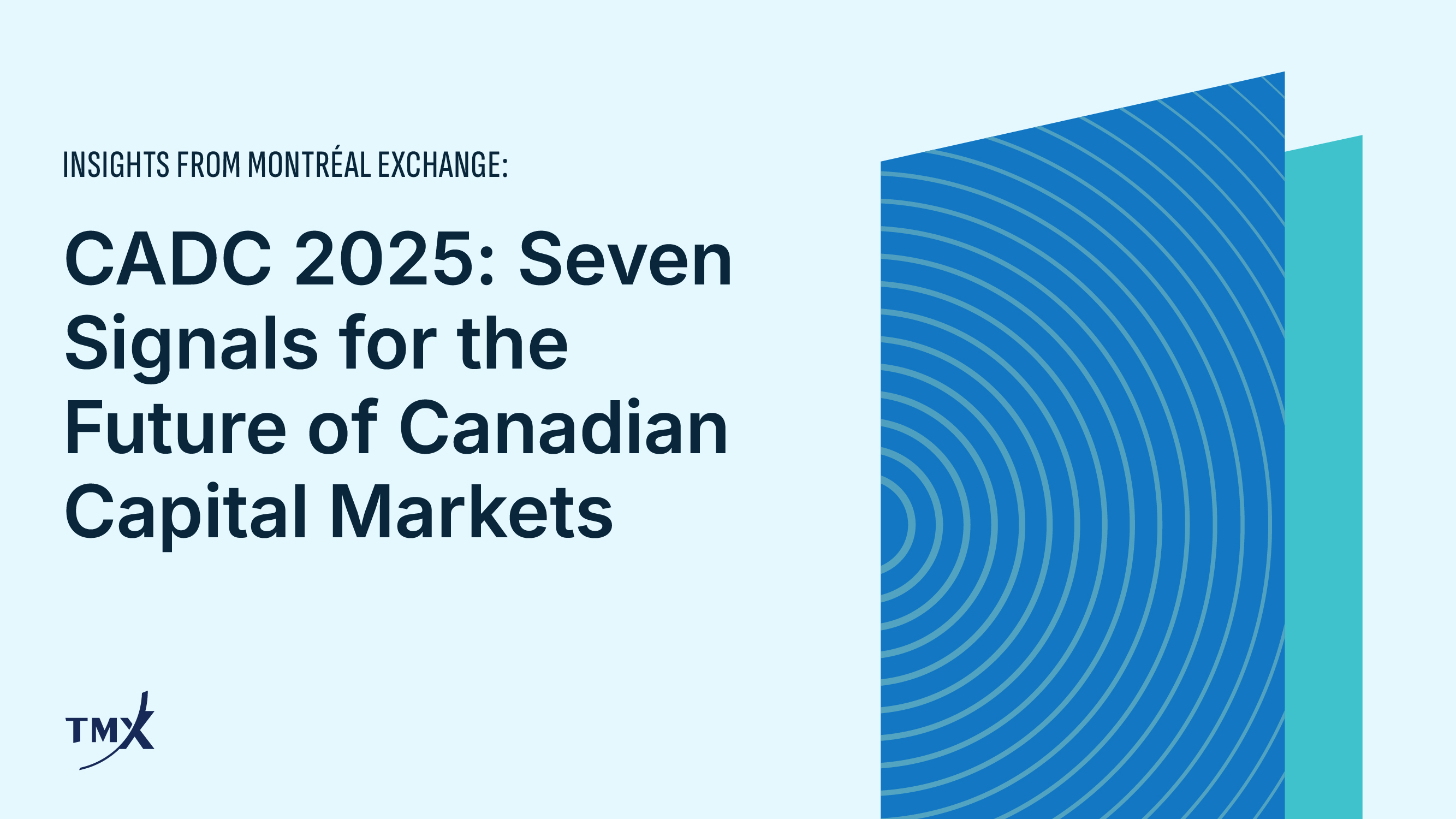Canadian Fixed Income Markets Prepare for a New Era

Fixed income markets globally have seen a dramatic shift in the last two years requiring bond investors to pivot with the times. Given the close trading relationship between the United States and Canada, monetary policies in the two countries moved lockstep during this time to mitigate the impact of negative externalities.
During the pandemic, the Bank of Canada and the Federal Reserve in the United States implemented bond buyback and quantitative easing programs to prevent an economic slowdown. However, supply chain disruptions, rising demand for goods and services and aggressive stimulus measures contributed to a surge in inflation as we came out of the pandemic. These factors, directly and indirectly, impacted short-term interest rate derivatives trading and fixed income portfolios.
Adjusting to Market Volatility
In 2022, bond investors faced the perfect storm of rising prices, fears of slowing economic growth and a volatile housing market. Loose monetary policy at the start of the year quickly changed to tightening of monetary policy measures, and both central banks moved forward with aggressive rate hikes to curb inflation.
Bond markets tend to anticipate monetary moves, but current geopolitical conditions led to a delayed reaction. Investors were also forced to adjust to a distinctly hawkish environment relatively quickly. After a sustained period of near-zero interest rates, bond yields reversed course and started rising to as much as 4% in the year's second half.
At Montréal Exchange (MX), we have spent the last few years building our product offerings to deliver a robust Canadian listed yield curve. From three-month BAX™ and CORRA Futures to the Two-Year, Five-Year, Ten-Year and 30-Year Government of Canada Bond Futures (CGZ™, CGF™, CGB™ and LGB™), investors can gain fast and efficient exposure to the Canadian economy and mitigate risk in various scenarios. To counter volatility, portfolio managers can rebalance fixed income and equities portfolios through synthetic overlay trades using bond futures, curve trades and duration adjustments.
Our observations of market trends and trading activity on MX show that investors are pricing higher interest rate changes into their portfolio decisions, particularly at the front end of the yield curve. We're also starting to see liquidity improve in the long end, particularly the Ten-Year and, to a lesser extent, 30-Year Government of Canada Bond Futures, as investors take a long-term view of economic conditions in Canada.
Understanding the Canadian Economy
As a member of the G7, Canada has a highly developed and diversified economy with real estate, manufacturing, financial services, natural resources and energy as key growth drivers. Historically, Canada's economy has been commodity-rich, with international imports and exports representing a significant component of GDP. In recent years, the economy has become more diversified, but energy and mining extraction remain essential sectors contributing to corporate profits and government revenues.
Despite the initial pullback due to the pandemic, the Canadian economy rebounded in the latter half of 2020 and into 2021. In 2022, the confluence of geopolitical conditions, macroeconomic trends and elevated commodity prices made Canada an even more attractive investment destination.
Global investors looking for yield might find Canada lags behind the United States and Australia. However, we're ahead of most European economies, which can lead to cross-market opportunities as central banks try to balance inflationary pressures and severe economic slowdowns.
Yield curve movements between the Two-Year to Ten-Year Government of Canada Bond Futures are at historical lows (inverted), indicating investors anticipate further future volatility. For example, historically, the typical yield between Two-Year versus Ten-Year was 100 basis points, but today it's tracking at -60 basis points.
Comparing The US And Canadian Markets
The housing markets in Canada and the United States share commonalities, but there are differences on the demand side. Both markets saw house prices rise in recent years due to low mortgage rates. In the past few months, inflation-curbing measures from the Bank of Canada and the Federal Reserve have impacted short-term borrowing costs and started to cool down the housing markets.
One of the main differences between the two markets is that the US conventional mortgage rate is 30 years compared to Canada's 5-year benchmark. This means there is generally more liquidity at the front end of the Canadian listed yield curve. As of October 31, 2022, the year-to-date volumes of the Two-Year Government of Canada Bond Futures (CGZ) on MX saw a 143% increase, while the Five-Year Government of Canada Bond Futures (CGF) rose by 30%.
Looking ahead to 2023, the MX short-term interest products are pricing-in recessionary economic conditions for the next 6-12 months and potential rate cuts in 2024. We anticipate this will lead to more curve trade exposure in the 2-year, 5-year and 10-year end of the Canadian listed yield curve. It will also allow portfolio managers to take a view on how steep the curve will be and hold down their portfolio duration accordingly.
Copyright © 2022 Bourse de Montréal Inc. All rights reserved. Do not copy, distribute, sell or modify this document without Bourse de Montréal Inc.'s prior written consent. This information is provided for information purposes only. Neither TMX Group Limited nor any of its affiliated companies guarantees the completeness of the information contained in this publication, and we are not responsible for any errors or omissions in or your use of, or reliance on, the information. This publication is not intended to provide legal, accounting, tax, investment, financial or other advice and should not be relied upon for such advice. The information provided is not an invitation to purchase securities or derivatives listed on Montreal Exchange, Toronto Stock Exchange and/or TSX Venture Exchange. TMX Group and its affiliated companies do not endorse or recommend any securities referenced in this publication. BAX, CGB, CGF, CGZ, LGB, Montréal Exchange and MX are the trademarks of Bourse de Montréal Inc.. TMX, the TMX design, The Future is Yours to See., and Voir le futur. Réaliser l'avenir. are the trademarks of TSX Inc. and are used under license.



